The Brownie Design with Nature Badge introduces girls to using math in outdoor activities, such as calculating ages of natural objects, exploring beehive shapes, and building bird feeders․
Overview of the Badge and Its Importance
The Brownie Design with Nature Badge is a unique program that encourages girls to explore and connect with the natural world while applying mathematical concepts․ It is the third badge in the Math in Nature series, following Shapes in Nature and Numbers in Nature․ This badge emphasizes the importance of understanding how math is integral to designing and interacting with outdoor environments․ By earning this badge, Brownies learn to calculate the age of natural objects, explore geometric shapes in beehives, and use ratios to create bird food․ These activities not only foster STEM skills but also encourage creativity and a deeper appreciation for nature․ The badge is designed to make math accessible and fun while promoting environmental awareness and stewardship․ It empowers girls to see themselves as designers and problem-solvers in the natural world․
Position in the Math in Nature Badge Series
The Brownie Design with Nature Badge is the third in the Math in Nature badge series, following the Shapes in Nature and Numbers in Nature badges․ This progression helps girls build a strong foundation in applying mathematical concepts to the natural world․ While Shapes in Nature focuses on identifying and creating geometric patterns found outdoors, Numbers in Nature introduces basic numerical skills like counting and measuring in outdoor settings․ The Design with Nature Badge advances these skills, encouraging girls to use math creatively to design and build projects inspired by nature, such as bird feeders and fairy houses․ This series fosters a deeper understanding of how math is intertwined with the environment, preparing girls to approach real-world problems with confidence and creativity;
Key Requirements for Earning the Badge
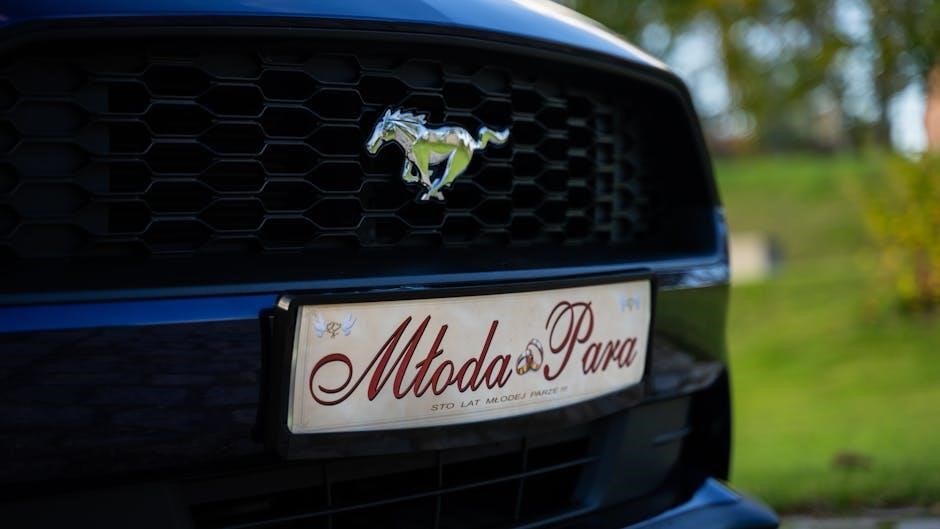
Earning the Brownie Design with Nature Badge involves five core activities: calculating the age of natural objects, exploring beehive shapes, building bird feeders, using ratios for bird food, and graphing nature observations․
Calculate the Age of a Natural Object
This activity introduces Brownies to determining the age of natural objects like trees, rocks, or shells․ Girls learn to identify growth patterns, such as tree rings, and study layers in sedimentary rocks․ They use tools like magnifying glasses or rulers to measure and analyze․ For trees, counting rings reveals age, while rocks may contain fossils indicating their formation period․ Guides help interpret findings, connecting math skills to nature observation․ This step fosters curiosity and understanding of natural processes, blending science with practical math applications․ Encouraging teamwork, girls discuss and verify their conclusions, building confidence in their problem-solving abilities․ This hands-on approach makes learning engaging and memorable, fostering a deeper appreciation for nature and its mathematical connections․
Explore the Shape of Beehives
This activity focuses on understanding the geometry and efficiency of beehive structures․ Brownies learn about the hexagonal shapes of honeycomb cells, exploring why this pattern is optimal for strength and storage․ They observe real or model beehives to identify and count cells, discussing how bees use math to build their homes․ Girls also participate in hands-on activities, such as creating hexagonal patterns or building model hives, to grasp the mathematical principles involved․ This requirement ties into broader themes of symmetry and efficiency in nature, helping girls appreciate how math shapes the natural world․ By studying beehives, Brownies gain insights into teamwork, engineering, and the interconnectedness of math and biology․ This engaging activity fosters curiosity and appreciation for the precision found in nature․
Measure and Build a Bird Feeder
This activity teaches Brownies to apply math skills to a fun, nature-related project․ Girls learn to measure materials accurately to construct a bird feeder, practicing concepts like length, width, and volume․ They follow a simple plan or design their own, using items like wood, plastic containers, or recycled materials․ The process involves calculating the amount of birdseed needed and understanding ratios for mixing different seed types․ Once built, the feeder is placed outdoors, allowing girls to observe birds and learn about their preferences․ This hands-on activity fosters creativity, environmental stewardship, and an appreciation for wildlife․ It also reinforces math skills in a real-world context, showing how measurements and ratios are essential for building functional designs․ The finished feeder becomes a welcoming spot for birds, connecting math lessons to nature and conservation efforts․
Use Ratios to Make Bird Food
For this requirement, Brownies learn to create bird food using ratios, blending different seed types, nuts, and fruits․ They practice proportional reasoning by following or creating recipes that ensure a balanced mix․ Girls measure ingredients precisely, applying fraction skills to maintain the correct proportions․ This activity connects math to wildlife nutrition, teaching girls about the dietary needs of birds․ They discover how ratios affect the attractiveness of the food to various bird species․ After mixing, the bird food is placed in feeders or spread in nature, allowing girls to observe which birds are drawn to their creations․ This hands-on project reinforces math concepts while fostering an appreciation for nature and wildlife conservation․ It also encourages girls to think critically about how math applies to caring for the environment and its inhabitants․
Graph Data from Nature Observations
This requirement encourages Brownies to collect and analyze data from their natural surroundings․ Girls observe patterns in nature, such as the number of specific leaves on plants, the colors of flowers, or the types of birds visiting a feeder․ They record their findings and then create graphs or charts to visualize the data․ For example, they might make a bar graph showing the number of red, yellow, and purple flowers in a garden or a pie chart illustrating the variety of birds observed․ This activity helps girls understand how data can be organized and interpreted to tell a story about the natural world․ It also introduces basic data analysis skills, reinforcing math concepts in a fun, outdoor setting․ By connecting math to nature, girls gain a deeper appreciation for both subjects and their real-world applications․
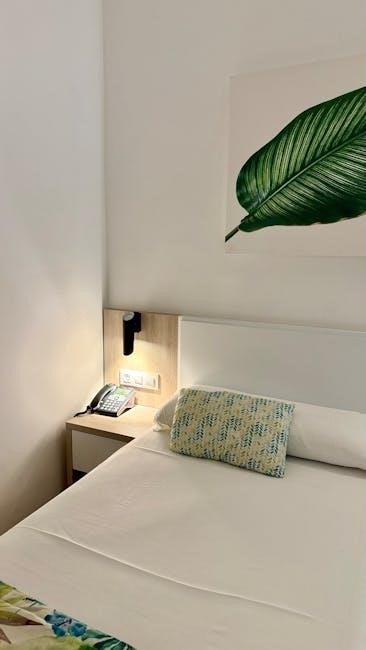
Activities to Support the Badge Requirements
- Nature scavenger hunts to explore natural shapes and patterns․
- Building and decorating birdhouses or bird feeders․
- Creating outdoor wind chimes using natural materials․
- Nature photography from unique perspectives;
- Constructing fairy houses with outdoor elements․
Nature Scavenger Hunt
A nature scavenger hunt is a fun and interactive way for Brownies to explore their surroundings while completing badge requirements․ This activity encourages girls to observe and interact with nature, fostering curiosity and appreciation for the environment․ During the hunt, participants can search for items like leaves, rocks, and flowers, and use math skills to measure their dimensions or calculate ages․ Girls can also identify shapes in natural objects, such as circles in tree rings or hexagons in beehives, aligning with the badge’s focus on math in nature․ Additionally, girls can practice data collection by recording their findings, which can later be used for graphing activities․ Encouraging teamwork and creativity, this scavenger hunt helps girls develop essential skills while enjoying the outdoors․ It’s an ideal way to kickstart their journey toward earning the Design with Nature Badge․
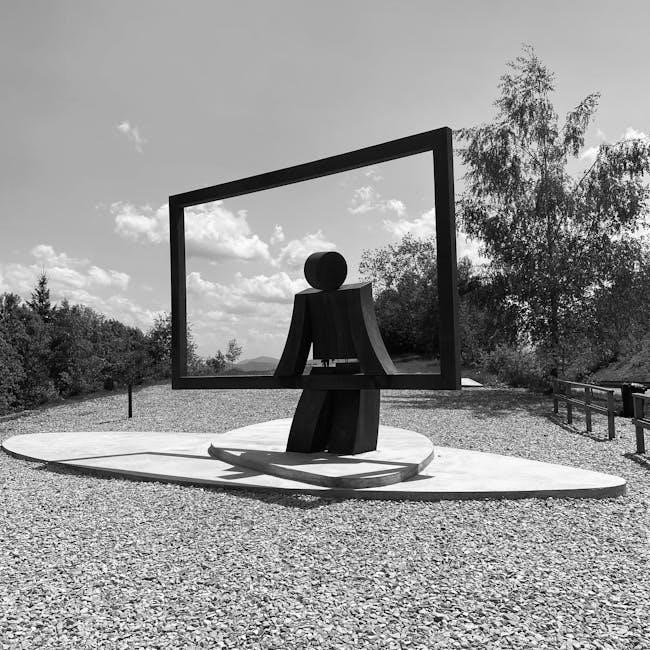
Building and Decorating a Birdhouse or Bird Feeder
Building and decorating a birdhouse or bird feeder is a hands-on activity that aligns perfectly with the Brownie Design with Nature Badge requirements․ Girls can practice measuring and cutting wood, applying math skills to ensure the structure is proportionate and functional․ This activity also introduces the concept of using ratios, as they may mix birdseed in specific proportions to create nutritious food for birds․ Decorating the birdhouse with natural materials like pinecones, twigs, or shells encourages creativity while connecting with nature․ Once completed, the birdhouse or feeder can be installed outdoors, allowing girls to observe wildlife and learn about bird habitats․ This project fosters a sense of accomplishment and stewardship, teaching girls the importance of providing for wildlife while applying math and design skills․
Creating an Outdoor Wind Chime
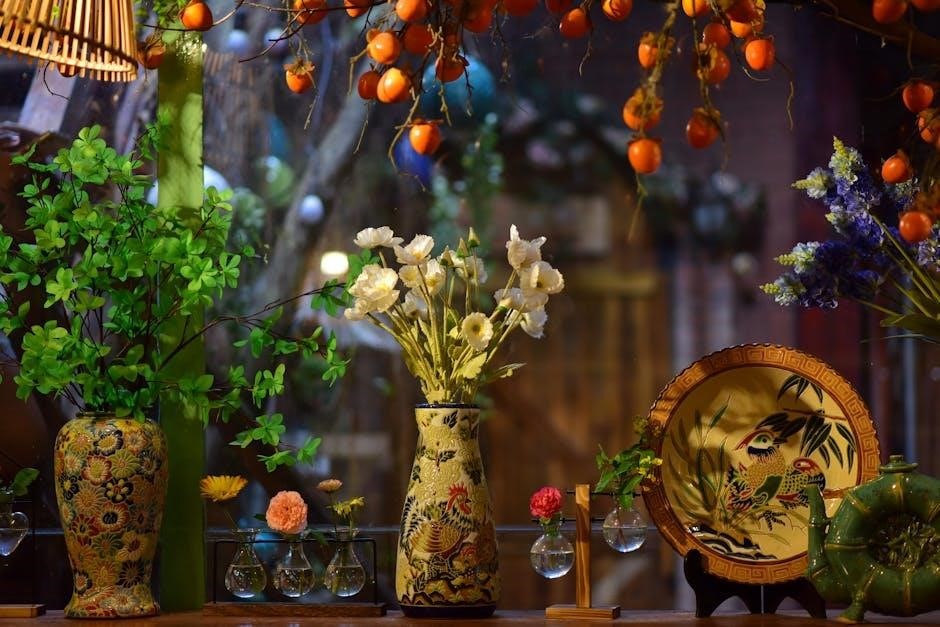
Creating an outdoor wind chime is a fun and creative activity that connects girls with nature while fulfilling part of the Brownie Design with Nature Badge requirements․ Girls can gather natural materials like sticks, rocks, sea glass, or metal washers to craft unique wind chimes․ The process involves designing the structure, ensuring the objects are securely attached using sturdy string or wire, and arranging them to produce pleasant sounds when the wind blows․ This activity encourages an understanding of how different materials and sizes affect sound, introducing basic concepts of acoustics and design․ Safety is a priority, with attention to smooth edges and secure attachments․ By crafting their own wind chimes, girls develop creativity, problem-solving skills, and an appreciation for nature’s role in art and music․ This hands-on project aligns with the badge’s focus on combining math, design, and environmental awareness․

Nature Photography from Different Perspectives
Nature photography from different perspectives is an engaging activity that encourages girls to explore and appreciate the natural world creatively․ Using cameras or smartphones, girls can capture unique angles, such as low perspectives to highlight flower textures or high perspectives to showcase landscapes․ This activity fosters observation skills and creativity while connecting math and nature through composition and framing․ Girls can experiment with macro shots of insects or wide-angle views of skies, developing an eye for detail and symmetry․ By documenting their surroundings, they learn to see nature as a source of inspiration and art․ This project aligns with the badge’s goals of exploring nature through hands-on, creative activities, making it a fun way to meet requirements while sparking a lifelong love for nature and photography․
Building a Fairy House
Building a fairy house is a delightful and imaginative activity that connects girls with nature while fostering creativity and teamwork․ Using natural materials like twigs, leaves, rocks, and pinecones, girls can construct miniature homes for mythical creatures or Brownie Elves, who are imagined to be just 3 inches tall․ This activity encourages girls to explore their surroundings, gather materials, and design structures that blend seamlessly into the environment․ By building fairy houses, girls learn about the properties of natural materials, their durability, and how they can be used creatively․ This project also promotes an appreciation for nature’s beauty and the importance of sustainability․ The process of designing and building a fairy house aligns with the badge’s math-in-nature focus, teaching girls to measure, estimate, and problem-solve while having fun outdoors․
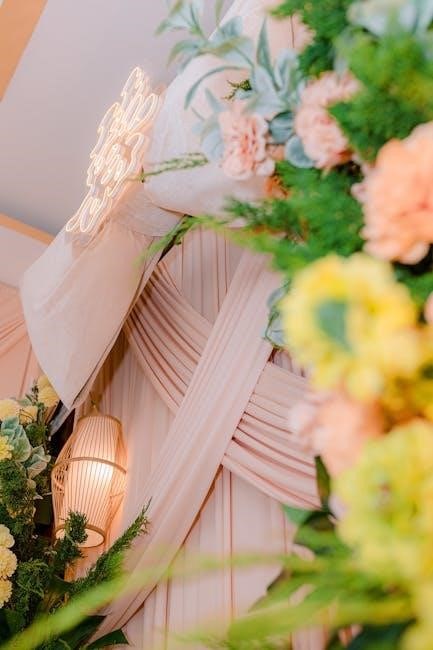
Tips for Troop Leaders
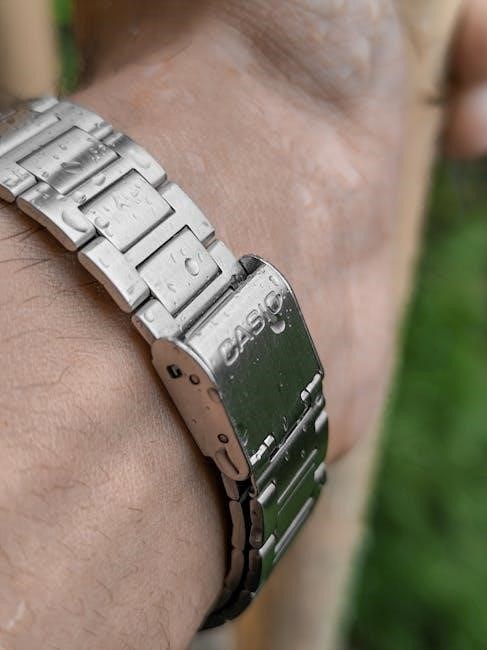
Prepare materials in advance, encourage creativity, ensure safety during outdoor sessions, and document progress to help girls successfully earn the Brownie Design with Nature Badge․
Preparing Materials for Outdoor Activities
Ensuring all necessary materials are ready is crucial for a smooth outdoor experience․ Troop leaders should gather items like twigs, rocks, and pinecones for nature-based projects․ For bird feeder activities, materials such as seeds, peanut butter, and string should be prepared in advance․ Safety gear like first-aid kits and bug spray should always be on hand․ Organizing materials in labeled containers or bags can help girls quickly access what they need․ Additionally, bringing extra supplies like gloves, scissors, and glue can accommodate spontaneous creativity․ Encourage girls to bring reusable water bottles and wear appropriate clothing for outdoor conditions․ By being well-prepared, leaders can foster a focused and enjoyable environment for earning the Design with Nature Badge․
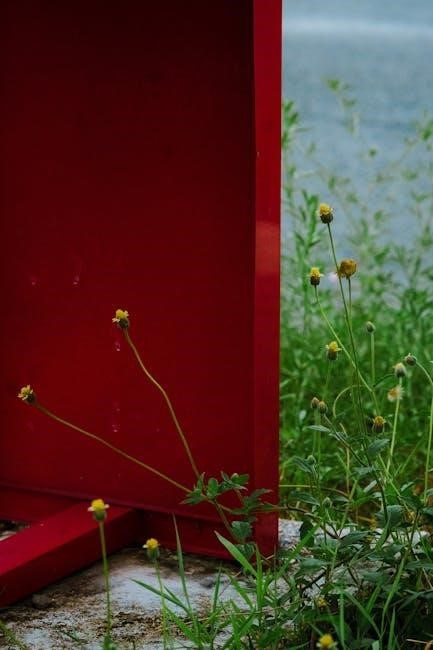
Encouraging Creativity in Nature-Based Projects
Fostering creativity in nature-based projects is essential for helping Brownies connect with their surroundings while earning the Design with Nature Badge․ Encourage girls to think outside the box by asking open-ended questions about how they can use natural materials to create art or solve problems․ Allow them to take the lead in designing projects, such as fairy houses or bird feeders, and provide a variety of materials like twigs, leaves, and rocks to spark imagination․ Celebrate their unique ideas, even if they don’t turn out as expected, to build confidence․ Highlight how nature itself can inspire creativity, such as observing patterns in beehives or shapes in flowers․ By embracing experimentation and individuality, girls will develop a deeper appreciation for nature and math while expressing their creativity․

Ensuring Safety During Outdoor Sessions
Safety is a top priority during outdoor activities for the Brownie Design with Nature Badge․ Leaders should ensure that all girls are aware of their surroundings and potential hazards, such as uneven terrain or wildlife․ Conduct a safety briefing before starting any activity, emphasizing the importance of staying together and using tools safely․ Encourage girls to wear appropriate clothing, including closed-toe shoes and insect repellent, depending on the environment․ Supervise all activities closely, especially when building or handling materials like bird feeders or fairy houses․ First aid kits should always be on hand, and leaders should be prepared to handle minor injuries․ By fostering a culture of safety and awareness, girls can fully engage in outdoor projects while minimizing risks and enjoying their time in nature․ This ensures a positive and educational experience for everyone involved․
Documenting Progress and Completion
Documenting progress is essential for tracking girls’ achievements in the Brownie Design with Nature Badge․ Troop leaders should maintain records of completed activities and requirements, such as photos of bird feeders or graphs created during observations․ Using a checklist or journal can help girls reflect on their learning and stay organized․ Leaders should also collect evidence of participation, like sketches from nature scavenger hunts or fairy house designs, to showcase progress․ At the end of the program, compile these documents to confirm completion of all badge requirements․ This documentation not only verifies achievement but also serves as a keepsake for the girls to remember their journey․ Encourage girls to take ownership of their documentation, making it a fun and educational part of the process․ Proper documentation ensures transparency and celebrates their hard work and creativity․
Earning the Brownie Design with Nature Badge empowers girls to explore math through creative outdoor activities, fostering a deeper appreciation for nature and encouraging future environmental explorations and learning․
Earning the Brownie Design with Nature Badge helps girls develop essential math skills through hands-on outdoor activities․ Key learning outcomes include calculating the age of natural objects, understanding geometric shapes in nature, and applying ratios to create bird food․ Girls also learn to measure and build bird feeders, graph data from observations, and explore the mathematical patterns found in beehives․ These activities foster creativity, problem-solving, and an appreciation for nature․ By completing the badge requirements, girls gain confidence in using math to design and interact with the natural world, while also developing teamwork and critical thinking skills through collaborative projects like building birdhouses or fairy houses․ The badge encourages girls to see math as a tool for understanding and connecting with their environment, promoting both academic growth and environmental stewardship․
Importance of Combining Math and Nature
Combining math and nature fosters a deeper understanding of both subjects, making learning engaging and relevant․ Math becomes a tool to explore and appreciate the natural world, while nature provides practical contexts for mathematical concepts; Activities like measuring natural objects, calculating ratios for bird food, and graphing observations help girls see math as a problem-solving skill applicable to real-life situations․ This integration encourages curiosity, creativity, and critical thinking, while also promoting environmental awareness and stewardship․ By linking math to nature, girls develop a stronger connection to their surroundings and gain confidence in their ability to use math to design, create, and interact with the world around them․ This approach not only enhances academic skills but also inspires a lifelong appreciation for both math and nature․
